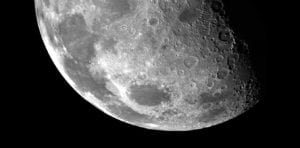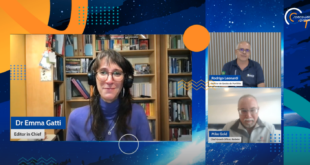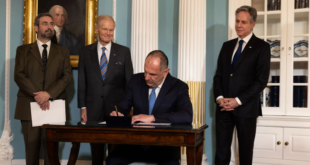
By Merve Erdem Burger, PhD
It was reported by Reuters on 5 May 2020 that the Trump administration is working on drafting an international agreement regarding mining on the Moon, to be known as the Artemis Accords. This is not surprising after the release of Trump’s Executive Order on Encouraging International Support for the Recovery and Use of Space Resources, as the fourth section of the Order instructs the Secretary of State to take the necessary actions to start negotiations on joint statements as well as bilateral and multilateral arrangements with foreign states. More recently, on 15 May NASA published on its website the core principles to be raised in this new instrument.
Although we do not know exactly when or how the negotiations on the Accords will begin with the US’ space partners, we do have a clear picture of the general scope and direction the Accords will take. Especially, it is clearly being drafted from a pro-commercial standpoint, as it seeks to establish a framework ensuring property rights for the companies involved over the resources mined, as well as safety and sustainability of the lunar missions. Moreover, we know that, in addition to raising important principles we are already familiar with in the space legal discourse, the Artemis Accords will also incorporate the concept known as safety zones in the space legal environment.
The introduction of the concept of safety zones to mining operations on the moon would represent a major innovation in how States approach the management of their lunar activities as well as their cooperation with other States active on the moon. However, what will ultimately be the nature of a ‘safety zone’ as presented in the future Artemis Accords? What protections or rights will they accord to operators in the lunar context? If resembling the non-interference zones referred to in Cody Knipfer’s January 2018 article on thespacereview.com, their nature may very well be similar to the safety zones we are familiar with from the Law of the Sea context. Based on the assumption that they will be, I will provide a brief overview of the concept of safety zones and argue how their introduction on the moon would be in conformity with international space law while also complementing and strengthening it.
In the Law of the Sea, the high seas, like outer space, are open to the activities of States or private actors, and all States have the freedom to construct artificial islands and other installations on the high seas under Article 87 of the United Nations Convention on the Law of the Sea (UNCLOS). The provisions on artificial islands and installations do not give rights to claim territorial waters or sections of the continental shelf or to declare an exclusive economic zone around installations, nor do they give sovereign rights on the air space above the installations. Instead, States are only given the right to declare safety zones around artificial islands and installations, which shall not exceed 500 meters measured from each point of the artificial islands’ or installations’ outer edge. The only power which a coastal state has regarding a safety zone is that of taking the necessary measures to protect the operations on the artificial island or installation.
Through analogy from the Law of the Sea to Space Law, we may also say that safety zones are not in contrast with the non-appropriation principle of Article II of the Outer Space Treaty (OST), as they do not give any sovereign rights over the physical area within the zones. And as presented by NASA, the introduction of lunar safety zones would be a tool for the implementation of Article IX with regards to avoiding harmful interference between the lunar mining activities. Moreover, the introduction of safety zones in the lunar context would also provide a means for implementing Article XII of the OST, which provides the right of States Parties to visit all facilities on the Moon and other celestial bodies. Under the scope of Article XII, safety zones around lunar installations would give a range of motion to States to define their standards and procedures in advance of the future visits and promote the security and safety of their ongoing lunar missions.
As we can see from the picture drawn by NASA, these Accords are intended to be international in nature while also being the first precedent for managing lunar mining activities. We also know they will put a large focus on the commercial needs of mining actors, and bringing safety zones to the lunar mining context is evidence of this. However, we must also note that a legal instrument, which claims to be an international instrument, and whose drafters aim to involve important space faring actors into the mix, must do more than this.
Without knowing the full content of the Accords, we can only speak on the elements that we can expect to be included and on how they should be treated, as based on the perspective of international space law. Any durable and effective framework for coordinating the mining activities of multiple nations simultaneously on the moon must address topics such as the allocation of lunar area between mining actors, international management of recovered natural resources, protection of the moon environment and prohibition of harmful contamination of the Earth from outer space, protection and maintenance of the OST principle provided in its Art. I that the exploration and use of outer space shall be carried out for the benefit and in the interests of all countries, and so on. (A fully developed framework on topics related to space resources management can be found in the recently released Building Blocks for the Development of an International Framework on Space Resource Activities). Not addressing topics such as these, and not addressing them in a way that satisfies the concerns of the international community as rooted in the principles of international space law, would still leave significant uncertainty concerning the legal regime of lunar mining activities.
Bringing the concept of safety zones to the moon and to space law is a good start for safeguarding lunar mining activities. Aside from that, I am cautiously and hopefully paying close attention to see if the other provisions raised above will be included in the future Artemis Accords and whether this instrument would provide comprehensive, equitable, and satisfactory rules for all nations. We are looking forward to see how this effort develops.
For the latest update about the Artemis Accords, read #SWGL’s news story here.

Dr. Merve Erdem Burger has been a research assistant since 2011 in the International Law Department of the Ankara University Faculty of Law, earning her Ph.D. from the same university in 2016. Since 2010, Merve has regularly presented at national and international conferences on space law matters, while in 2017 she attended the IAC as an IAF Emerging Space Leader. She also instructs on space law matters in educational contexts and has spoken in Turkish news media on space law issues. Merve’s research interests don’t only concern space law, but also include other areas such as treaty interpretation, state immunity, jus cogens rules in international law, and cyber law.
 SpaceWatch.Global An independent perspective on space
SpaceWatch.Global An independent perspective on space




